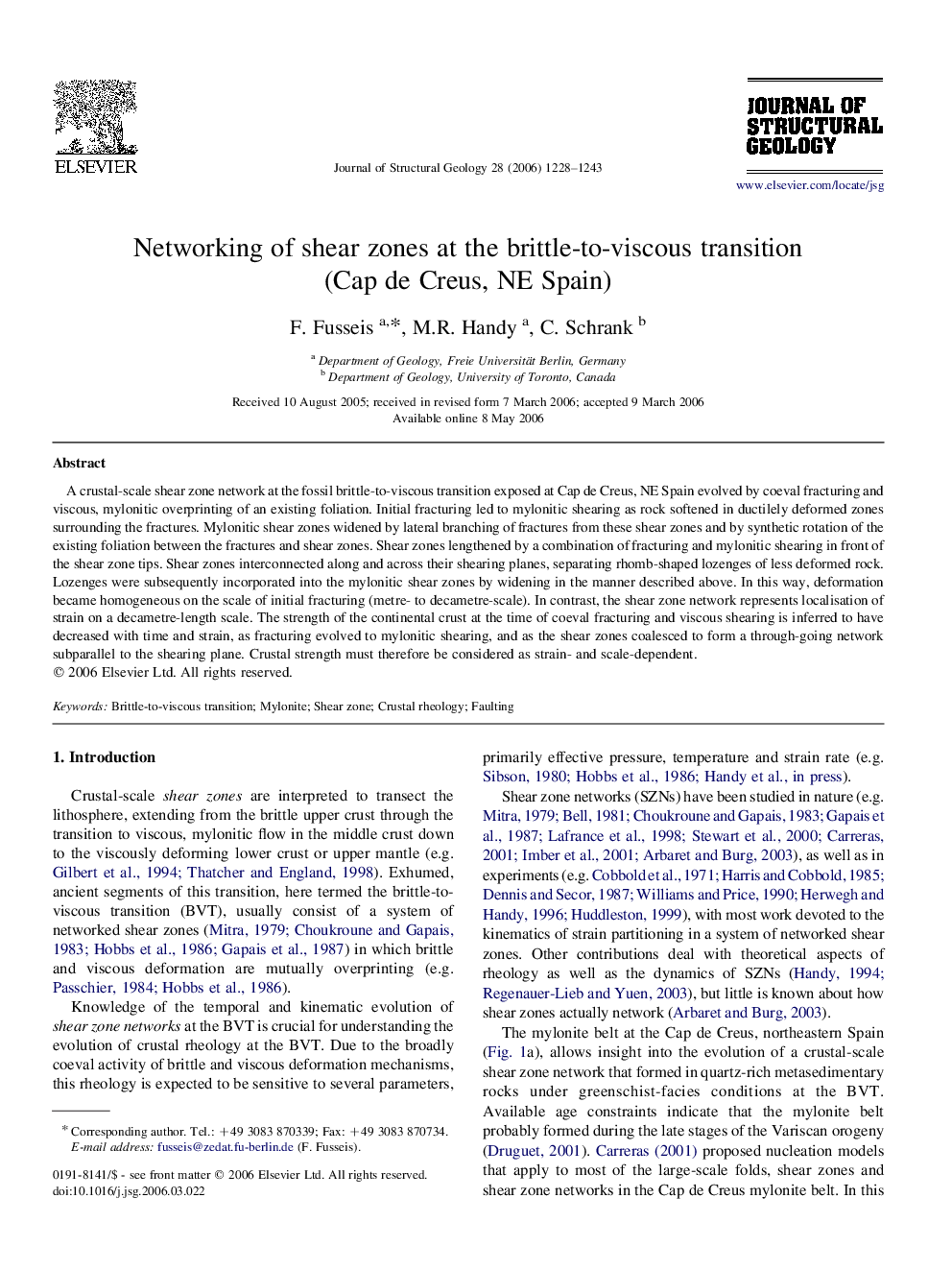| کد مقاله | کد نشریه | سال انتشار | مقاله انگلیسی | نسخه تمام متن |
|---|---|---|---|---|
| 4734185 | 1357077 | 2006 | 16 صفحه PDF | دانلود رایگان |

A crustal-scale shear zone network at the fossil brittle-to-viscous transition exposed at Cap de Creus, NE Spain evolved by coeval fracturing and viscous, mylonitic overprinting of an existing foliation. Initial fracturing led to mylonitic shearing as rock softened in ductilely deformed zones surrounding the fractures. Mylonitic shear zones widened by lateral branching of fractures from these shear zones and by synthetic rotation of the existing foliation between the fractures and shear zones. Shear zones lengthened by a combination of fracturing and mylonitic shearing in front of the shear zone tips. Shear zones interconnected along and across their shearing planes, separating rhomb-shaped lozenges of less deformed rock. Lozenges were subsequently incorporated into the mylonitic shear zones by widening in the manner described above. In this way, deformation became homogeneous on the scale of initial fracturing (metre- to decametre-scale). In contrast, the shear zone network represents localisation of strain on a decametre-length scale. The strength of the continental crust at the time of coeval fracturing and viscous shearing is inferred to have decreased with time and strain, as fracturing evolved to mylonitic shearing, and as the shear zones coalesced to form a through-going network subparallel to the shearing plane. Crustal strength must therefore be considered as strain- and scale-dependent.
Journal: Journal of Structural Geology - Volume 28, Issue 7, July 2006, Pages 1228–1243